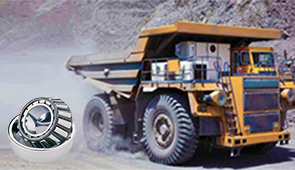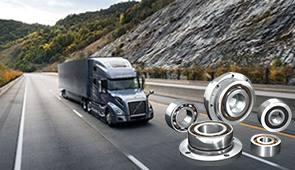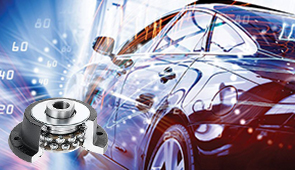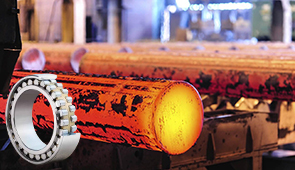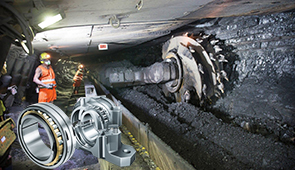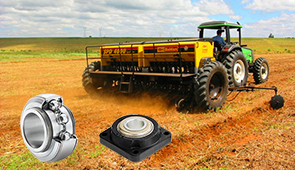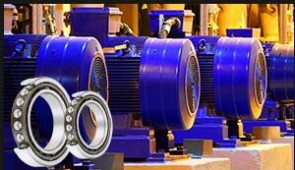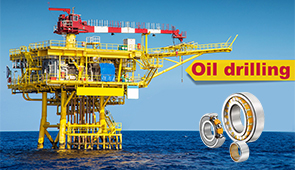How Many Bearings Does a Skateboard Need?
Skateboarding is about precision, balance, and fluid movement. Have you ever stopped and thought about the elements that make all of these things possible? Dogbones, along with bearings, are what make your skateboard roll effortlessly, of course, whether you are landing big tricks or just cruising the streets. But how many bearings does a skateboard need? As one more interesting topic about designing your skateboard, this article aims to clarify all the things you want to know about skateboard bearings so that you will always be in the know and ready to hit the streets!
Understanding Skateboard Bearings
What Is a Skateboard Bearing?
A bearing is a small, circular object fitted within the skateboard wheel to enable smooth spinning about the axle. A bearing is made up of an outer ring, an inner ring, steel or ceramic balls, a ball retainer, and shields to protect the inside. These components work together to lessen friction and allow the wheels to rotate freely, thereby helping to maintain speed and ensure a smooth ride.
In a typical four-wheeled skateboard, eight bearings are to be fitted-two per wheel. Bearings are of standard size and thus can fit any skateboard wheel, regardless of brand or type. This standardization further facilitates the removal and replacement of bearings or upgrading them. While all bearings perform a very basic function, there are differences in the quality, materials used, and durability that can affect their performance and lifespan.
Bearings are crucial in determining how swiftly and smoothly the skateboard will move. Proper maintenance goes a long way in making the bearings last longer. Cleaning and keeping away from dirt and moisture ensures that the bearings perform to their maximum potential. Regardless of whether you’re cruising around, doing tricks, or racing, good bearings that are properly maintained will maximize your skateboarding experience.
How Bearings Function in Skateboarding
The bearings are one of those crucial components in skateboarding that enable wheels to revolve freely yet smoothly around the axle. Each wheel has been installed with two bearings that attempt to reduce friction between the wheel in rotation and the static axle so that the wheel moves effortlessly. When the bearings do not function as they ought to, then resistance is felt from the wheels, therefore making it impossible to smoothly glide while gaining speed.
These tiny round devices are usually made of steel or ceramic and consist of two rings: an inner one and an outer one, balls, and a cage to hold these balls apart from each other. The design, as well as precision, greatly affects the bearing’s capabilities. Good-quality bearings will lessen the effort required when skating, thereby offering smooth rides and consistent speed, especially for tricks, downhill, and cruising on uneven terrains.
Correct maintenance permits the bearings to reach their intended function. In this, simple cleaning and lubrication prevent dust and debris from accumulating and affecting their performance. Timely bearing replacement when damaged or worn out is a matter of safety and ensures maximum enjoyment from skateboarding for all levels of riders.
The Importance of Bearings for Skateboard Wheels
Bearings form an indispensable part of skateboard wheels to allow smooth and friction-free motion. They allow the wheels to spin freely while reducing the friction between the wheel and axle. This results in better performance, whether the skateboard is used for commuting, tricks, or downhill riding. Without functional bearings, the wheels would not spin well, and the skate experience would be terrible.
Good bearings increase speed and control, offering greater precision and stability to riders. These are very important in activities that demand consistent performance, such as street skating or ramp riding. By reducing resistance, good bearings make it possible for riders to conserve energy and enjoy smoother rides at higher speeds.
The main factors increasing the life of bearings and their reliability truck include regular maintenance. Cleaning and lubrication prevent winds of dirt, moisture, and debris from passing through and damaging the function. For safety, one must change the worn or damaged bearings whenever possible, so the rider maintains the best performance and avoids the risk of accidents.
How Many Bearings Does a Skateboard Need?
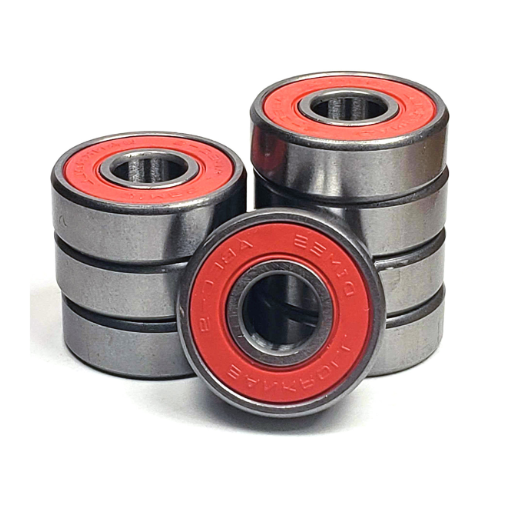
Standard Bearing Requirements for Skateboards
Eight bearings are usually necessary for a typical skateboard setup, with two bearings inserted into each of the four wheels. These bearings allow the wheels to maintain a free and efficient spin, thereby producing a smoother ride and better performance. Most skateboard bearings follow the industrial bearing standards of 8 mm core in diameter, 22 mm outer diameter, and 7 mm width, thus agreed upon by manufacturers and are pretty much compatible with most wheels and trucks on the market.
Generally, quality bearings are measured using the ABEC scale, which sets up standards and tolerances for precision; a higher ABEC rating indicates the bearing is more precise. Skateboarders, however, tend to go for factors such as durability and quality of materials over and beyond the ABEC rating. Shock absorption and longevity-type bearings are essential for trick-oriented skating, not just speed. The ceramic type saw some demand because of its weight and its heat and wear resistance against steel ones.
Choosing the best skateboard bearings for your money varies depending on your skating style and the terrain you choose; therefore, one has to make sure that these specs fall carefully into place before performance.
Calculating Bearings for Longboards
The ABEC rating system is important when computing longboard bearings, but so is the use of the board. The ABEC system measures the tolerance and precision of the bearings and goes from ABEC-1 to ABEC-9. Bearing a higher rating usually means they have more precision and speed, but in actual longboarding for purposes such as cruising or downhill activities, emphasis is placed more on durability and smoothness.
In downhill runs, longboarders seeking stability may settle for a mid-range ABEC rating with very good lubricant to ensure minimal friction and maximum control. For casual cruising, ABEC-5 with rubber seals would provide the best compromise between cost, performance, and ease of maintenance.
In addition, information on load distribution, maximum moisture exposure, type of terrain (e.g., smooth pavement, rough roads), etc., will help to decide the appropriate choice of steel versus ceramic bearings. Ceramic bearings are preferred for heat and corrosion resistance and therefore have the highest application for riders who more often go through varying weather conditions and extended usage. Combining these considerations will allow riders to calculate bearings that best accommodate their longboarding style.
Common Configurations for Skateboard Wheels
The type of wheels you choose influences many factors, like performance, stability, and general suitability for various terrains or disciplines. Skateboard wheels vary mainly by diameter, durometer (hardness), and shape, each of which affects the skating experience.
- Diameter: Wheel size is in millimeters, with smaller wheels (49-54mm) being common for street skating and technical tricks, for being light, and for quick acceleration. Bigger wheels (55mm and above) imply a smooth ride, hence good for cruising, vert skating, or rough surfaces.
- Durometer (Hardness): The greater the hardness, the higher the number in the durometer. This ranges in skateboard wheels from approximately 78A to 101A. Soft wheels (from 78A to 87A) are usually cruiser wheels, good for shock absorption on unpleasant terrain; hard wheels (from 95A to 101A), in contrast, are better for slides, tricks, and immobilizing surfaces such as skateparks.
- Shape: Much like those little psycho wheels affect such things as grip and stability, the wheel shape, diameter, and width will affect stability and grip. The wider wheel,s having a sort of rounded shape, provides for maximum surface contact and stability; thinner wheels are more of an edge shape, hence offering more precision for technical tricks.
A combination can then be elaborated according to individual choices and skating styles to adjust the skateboard. With the knowledge of these factors making it is easier to choose the wheels that strike a perfect balance between fast, grip, and versatility. Contemporary wheel technology, with all-terrain wheel formulas, urethane technology, etc., means that skaters have lots of options to enhance performance.
Types of Skateboard Bearings
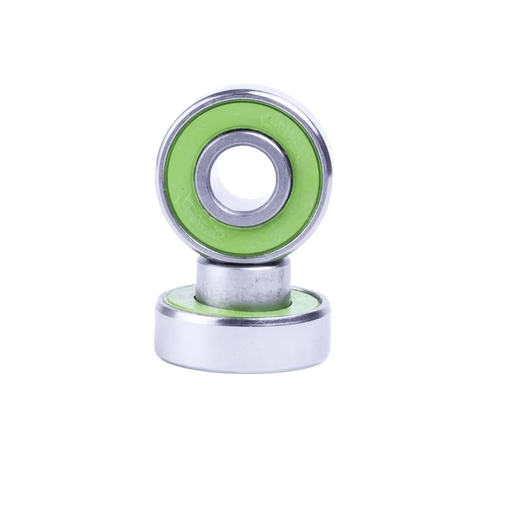
Precision Bearings vs. Standard Bearings
Bearings made with precision bearings are manufactured with lesser tolerance, more accuracy, and with better materials than ordinary bearing grades; though these bearings render better performance and longer life at a price higher than that of ordinary bearing grades.
|
Key Point |
Precision Bearings |
Standard Bearings |
|---|---|---|
|
Tolerances |
Tighter |
Looser |
|
Accuracy |
High |
Moderate |
|
Materials |
Superior |
Standard |
|
Performance |
Superior |
Basic |
|
Durability |
Longer |
Shorter |
|
Cost |
Higher |
Lower |
Swiss Bearings: Are They Worth It?
Swiss bearings are famous for their outstanding quality, often chosen by skilled professionals or enthusiasts who demand the utmost performance and precision. The manufacturing of an initial bearing entails stricter tolerances and superior materials, while others had perhaps been smoother in rotation, faster, and more durable. These bearings perform well in industries such as skateboarding, cycling, and high-precision machinery, where reliability is of utmost concern.
One major advantage of Swiss bearings is that, from the maintenance of the overall working run-condition over an extended period, given a normal or nominally harsh environment, they keep performing in operations. Often, it is claimed by the users that their lifespan is extended, while maintenance issues are greatly reduced when properly maintained. But high quality also comes at a price, making Swiss-bearing sets a measure too dear in respect to the cost of common or precision bearings.
Depending on your needs, Swiss bearings may or may not be worth acquiring. For an application where maximum performance and reliability in the minimum period are essential, the initial time and cost might be justifiable. For the layman or application having less demanding precision requirements, a standard bearing should suffice and would be less expensive.
Replacing Skateboard Bearings
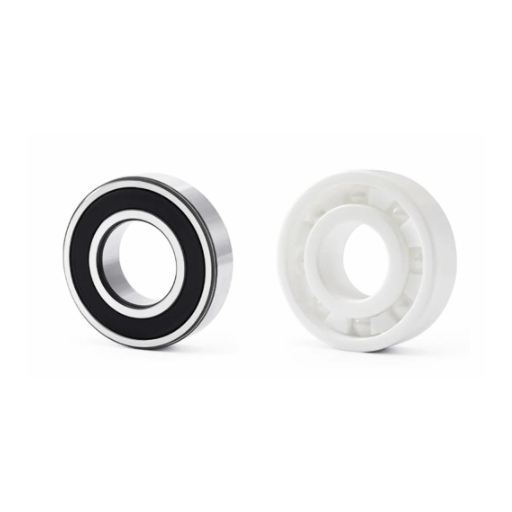
Signs That It’s Time to Replace Your Bearings
Skateboard bearings are worn out after exposure to dirt, water, and debris, along with regular use. Here are some key signs to identify the need to revert into replacement for your bearings:
- Reduced Performance: Whenever your skateboard sounds slower or less smooth than usual, even after regular cleaning and lubrication, that is when you must know that the bearings have worn away.
- Unusual Noises: Any grinding, clicking, or squeaking noise from the wheels means their bearings are damaged or dirty.
- Rust or Corrosion: Rust spotted on the bearings is a definite signal for replacement.
- Wheel Wobble: If your wheels wobble or feel loose, it might be because of excessively worn bearings.
- Difficulty Spinning: When you spin the wheels for yourself with your hands and they prematurely stop or do not spin freely is a clear indication of bearing issues.
In keeping track of these signs, combined with maintenance, the skateboard’s performance and life might be maximized. Yet, when the symptoms persist even after care has been given, then the replacement of the bearings becomes necessary.
How to Replace Skateboard Bearings
Changing skateboard bearings involves some very simple steps, simple tools, and care. Follow the steps to have your bearings done properly:
- Take off the Wheels: Unscrew the axle nuts on your skateboard trucks using the skate tool or wrench. Slide out the wheel from the axles and keep the hardware aside so none of the parts get lost.
- Remove the Old Bearings: The edge of the axle should be inserted in the center of the bearing, then the bearing should be gently levered out of the wheel. Repeat for all the bearings on both wheels. Be careful not to bend or damage the core of the wheels.
- Clean the Wheels: Before packing in new bearings, you might want to inspect and clean your wheels. Just wipe out whatever dirt or dust, if any is using a clean cloth
- Packing in the New Bearings: Slide the new bearing into the axle. Then put the wheel and press it down so that the bearing is firmly seated on the sideband. Flip the wheel over and repeat the entire procedure for the second bearing.
- Reinstalling the Wheels: Slide the wheels onto the truck axles once more. Reattached the axle nuts, but maintain a slight space or gap so the wheels can still spin freely without being overtightened.
- Test the Installation: Spin each wheel to verify correct bearing seating and that the wheels spin freely. If any wheel either stiffens or wobbles, then it is time to recheck the bearing alignment and perhaps tighten the nuts.
Perfect bearing refitting guarantees skateboarding with buttery smooth motions and lifespan extension for your entire setup. Regularly maintaining your bearings will keep your board in top form.
The Role of Bearing Spacers
Bearing spacers are essential for the smooth functioning and increased longevity of your skateboard. These small cylindrical components fit between the bearings inside the wheel, assuring that they remain in line and perform well. Even small problems with uneven pressure could reduce the bearing life and substantially degrade the quality of your ride. Use of spacers can provide stability and weight distribution and allow for tighter fastening of axle nuts without compromising the free rotation of wheels. There are five factors behind using bearing spacers:
- Better Bearing Alignment: The spacer means that the bearings remain in an aligned direction and parallel to each other, preventing them from unnecessary wear and tear.
- Wheel Performance Optimization: The spacers maintain even pressure, forcing the wheels to spin smoothly and equally.
- Increase Stability: Spacers increase the stability of the skateboard, thus lessening wobble and granting greater control during tricks and turns.
- Bearing Life Extension: Spacers help in reducing the stresses on the bearings, thereby preventing them with time and hence requiring frequent replacements.
- Allows for Precise Axle Nut Tightening: Sometimes, the nut cannot be tightened completely without a slight restriction in wheel movement. With spacers, the nut can be tightened completely and securely without impeding the wheel spin.
The usage of good-quality spacers will offer better performance along with enhanced durability, particularly if fitted onto a skateboard along with good bearings that are kept in proper condition.
Maintaining Skateboard Bearings
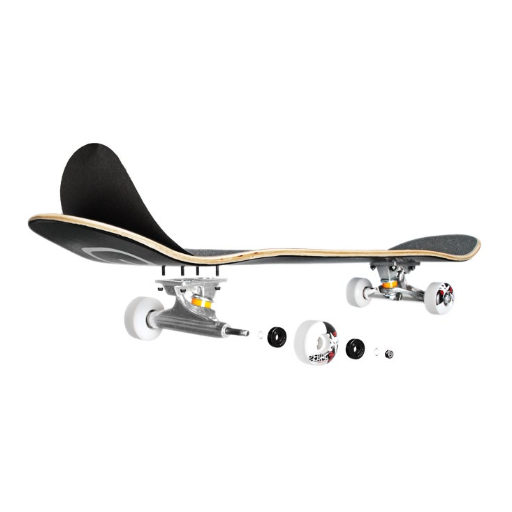
Tips to Make Your Bearings Last Longer
- Keep Your Bearings Clean and Dry: Moisture and dirt will demolish skateboard bearings. Clean those bearings immediately after impure conditions, such as being wet or dusty dirty them, lest debris builds and rusts the bearings. Use a bearing cleaner or isopropyl alcohol for the best result
- Keep Your Bearings Lubricated: Frictional force reduces wear, and an adequately lubricated bearing will not undergo such action. After cleaning, use a little amount of quality skate bearing lubricant to reduce friction, allowing the bearing to rotate smoothly and prolonging its operating life.
- Try to Avoid Water and Mud: Skaters are recommended to avoid puddles, wet sidewalks, or muddy terrains as much as possible. A drop or two of water may find its way inside a bearing, to the detriment of the latter, causing it to slowly corrode and lose performance level over time
- Check and Replace Shields: Shields attempt to keep out dirt and grime. Examine these frequently for damage and replace them if needed, for optimum performance.
- Store Your Board in a Dry Environment: Should they not be of use, keep your skateboard in cool, dry areas so that your bearings do not get affected by any moisture or humidity that may cause rusting or degradation.
- Avoid Over-Tightening Axle Nuts: The damage to bearings can be brought about by over-tightening of axle nuts. Axle nuts should be tightened just enough to allow free rotation, yet securely fix the wheels in place.
If you apply these tips and create a routine maintenance regime, you will extend the lifespan of your bearings and have smoother rides, and save money on several replacements.
Cleaning and Lubricating Your Skate Bearings
Always cleaning and lubricating the skate bearings can enable the upkeep of performance and longevity. Dirt, dust, and moisture accumulate with time, causing bearings to lose their smooth rotational movement. This simple yet effective way will allow you to keep the bearings in good shape.
- Remove the Bearings from Wheels: Start by carefully removing the bearings from your skate wheels with a skate tool or bearing puller. It would be best if you popped out the bearings gently to cause no damage.
- Properly Clean the Bearings: Wipe any loose dirt or debris from the surface before soaking the bearings in a cleaning solution. A good choice would be isopropyl alcohol or a dedicated bearing cleaner, which dissolves grime effectively. Make sure that you gently shake the bearings in the solution to cleanse thoroughly.
- Dry Thoroughly: After they are cleaned, make sure that the bearings get air-dried well. Avoid using compressed air straight at them; it might leave moisture behind or even damage the shields if care is not taken.
- Apply Lubricant: Allowing the bearing to dry shall be met with bearing lubricant for friction reduction as well as for protection against wear. Only a small amount is needed, ensuring it is evenly spread inside the bearing.
- Reassemble and Test: Place the cleaned bearings with lubricant back into your wheels. Spin the wheels to make sure they both smoothly rotate before the wheels are mounted back onto the skates.
By taking care to follow proper cleaning and lubrication techniques, the performance of your skate bearings can be further enhanced and, at the same time, be protected from early wear. Do this maintenance at regular intervals to keep your rides fast, smooth, and consistent.
Frequently Asked Questions (FAQ)
Q: How many bearings does a skateboard need?
A: A regular skateboard requires eight bearings in total. Two bearings are placed in each wheel, for there are usually four wheels; eight bearings will then be required to provide optimal efficiency.
Q: Which bearings are best to choose?
A: When considering the bearings, many skaters choose an ABEC-rated bearing, ABEC 7, for instance-for its compromise between speed and longevity. Of course, it is important to have a bearing that can take abuse in the skatepark environment.
Q: Are new bearings easy to install on your skateboard?
A: Yes. New bearings are quite simple to install if you remove the wheels from the axle first, then slot out the old bearings as well as slot in the new set of bearings for a change. A top-quality lube applied correctly could extend the life of your skateboard.
Q: What influences the lifespan of your skateboard?
A: The Life expectancy of your skateboard may be affected by the quality of bearings, the kind of riding being done, and surface conditions. Regular upkeep, such as cleaning and lubricating the bearings, could keep them running longer.
Q: How do bearings help eliminate friction on a skateboard?
A: Bearings have metal balls that roll between the inner race and the outer race, which is to say that it allows the wheels to spin freely. This reduces friction, thus giving the skateboarder a more pleasurable and efficient ride on the skateboard.
Q: What are flat spots on skateboard wheels, and how are they formed?
A: Flat spots are formed on skateboard wheels when the wheels undergo severe braking or sliding, resulting in uneven wear of the polyurethane material. Good bearings will help reduce occurrences of this and will keep your ride smooth.
Q: How do I maintain my skateboard bearings?
A: To keep the skateboard bearings in good condition, one should always check if dirt or debris is present, cleaning them if so. A bearing cleaner or alcohol may be used. Once the cleaning is done, ensure to apply the lightest application of lubricant to keep the bearings in excellent condition.
Q: Is there any difference between the modern-type bearings and the older ones?
A: Modern bearings have a better set of materials and designs to enhance performance, provided by a professional’s understanding. They are better able to withstand more rigorous use and the arguments of pro-skateboarders and enthusiasts.
Q: How do washers affect skateboard bearing performance?
A: Washers are put between the bearing and the axle to help in the distribution of pressure and to avoid wear. The washers can stop bearing performance through damage or keep it more stable, particularly under hard rides.
Q: Shall bearing requirements differ per type of skateboard?
A: Any given skateboard needs, in essence, 8 bearings per set, no matter what kind it is. However, other specialty boards like longboards or cruisers might have different wheel arrangements that would give a different number of bearings. Always check the specs for your particular setup.
UCTH213-40J-300 with Setscrew(inch)
CNSORDERNO: Normal-duty(2)
TOGN: UCTH213-40J-300
SDI: B-R1/8
SD: 2 1/2
UCTH212-39J-300 with Setscrew(inch)
CNSORDERNO: Normal-duty(2)
TOGN: UCTH212-39J-300
SDI: B-R1/8
SD: 2 7/16
UCTH212-38J-300 with Setscrew(inch)
CNSORDERNO: Normal-duty(2)
TOGN: UCTH212-38J-300
SDI: B-R1/8
SD: 2 3/8
UCTH212-36J-300 with Setscrew(inch)
CNSORDERNO: Normal-duty(2)
TOGN: UCTH212-36J-300
SDI: B-R1/8
SD: 2 1/4
UCTH211-35J-300 with Setscrew(inch)
CNSORDERNO: Normal-duty(2)
TOGN: UCTH211-35J-300
SDI: B-R1/8
SD: 2 3/16
UCTH211-34J-300 with Setscrew(inch)
CNSORDERNO: Normal-duty(2)
TOGN: UCTH211-34J-300
SDI: B-R1/8
SD: 2 1/8









